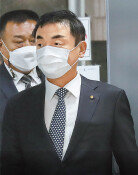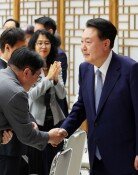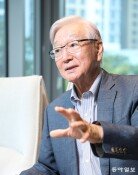The grim reality of firefighters
The grim reality of firefighters
Posted August. 27, 2024 07:27,
Updated August. 27, 2024 07:27
"His wife collapsed in tears, remembering the exhaustion of her husband, who always nodded off from lack of sleep, and the unbearable heat he endured alone in the darkness on the second floor until his last breath." ― From Kim Hoon's "The Death of a Firefighter" ("While Cooking Ramen" 2015)
I referenced this powerful line from novelist Kim Hoon six years ago in a short column. It describes the tragic story of Seo Hyeong-jin, a firefighter from Yeosu who died in the line of duty on May 24, 1995, after saving 16 people from a fire at the Central Market in Gyo-dong. As a child, Kim Hoon always wrote "firefighter" as his future dream. This might explain why firefighters often appear in his novels. Seo's story is emblematic of the recurring themes in Kim Hoon's work, where firefighters often appear as symbols of a functioning national system—heroes rushing into danger to protect the public.
As a young journalist, some 15 years ago, I had an opportunity to meet several firefighters. One had suffered burns when a charred branch fell on his neck while battling a forest fire. He had to pay for his hospital visits out of pocket because his injury wasn’t officially recognized. Another firefighter joined a lawsuit over unpaid allowances, only to be demoted to the ambulance team in retaliation. In his late forties, he broke down in tears in front of me, a 25-year-old reporter, overwhelmed by the pressures of the job.
Criticism has mounted over the response to a hotel fire in Bucheon on Thursday. Concerns have been raised about outdated and malfunctioning air mats, delays in the 119 emergency call response, and even false rumors that the mats were installed upside down. In fact, the air mats cannot be installed incorrectly as they have air hoses at the bottom. Nonetheless, firefighters were ridiculed based on a single misleading photograph.
Firefighters on the scene said the hotel was already engulfed in thick, blinding smoke when they arrived. The narrow alley, congested with parked cars, left no room to properly deploy the ladder truck, forcing them to use the air mats. Although these mats were 11 years past their service life, the firefighters judged them to be a better option than having potential jumpers fall directly onto the pavement. The chaotic sequence of events, where people jumped before firefighters could signal, causing the mat to flip, was entirely unpredictable.
An investigation is now underway to determine what went wrong. The firefighting response will likely be scrutinized. However, the focus of this debate should not be on assigning blame or causing public shame. Instead, it should be on learning from this incident to prevent similar mistakes in the future.
Firefighters continue to work under harsh conditions. To receive overtime pay, they must still fight with local governments as they did 15 years ago. The amounts allocated for medical treatment and caregiving for injured firefighters remain frozen at 2009 levels. While the National Police Hospital was established in 1949 (relocated to Songpa, Seoul, in 1991) and the Armed Forces Capital Hospital in 1951 (relocated to Bundang, Gyeonggi-do, in 1999), there is still no National Firefighters Hospital. Efforts to establish one were repeatedly shelved by previous governments until the Moon Jae-in administration finally committed to it in 2017. Currently, the project is only about 30% complete. The shortage of personnel also remains a critical issue, with the nationwide average shortfall of on-site firefighting staff at 10% by the end of 2022, and some regions such as South Jeolla and Ulsan exceeding 20%.
The Bucheon incident has exposed the grim reality faced by our firefighters. They cannot replace old air mats with new ones, nor can they increase their ranks on their own. These are responsibilities that fall squarely on the government and the National Assembly, which must allocate and approve the necessary budget. Let's ensure that the burden of blame does not unjustly fall on the very people risking their lives to protect us. Instead, let's use this moment to demand better conditions for those serving on disaster's front lines, conditions that they rightfully deserve.
Headline News
- Shin Hanul 3 and 4 nuclear power plant construction resumes
- Political leaders and doctors struggle to convene a council
- Trump sparks debate with false claims, Harris criticized for job numbers exaggeration
- Money Lending Act amendment bill to begin this month
- Washington puts pressure on Seoul to join chips regulations on Beijing







